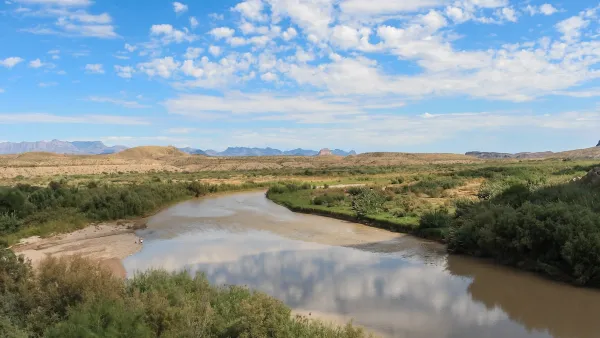Despite flowing through ten different nations, the Nile's water is only technically the property of Egypt and Sudan. The other eight nations are trying to change that. But as the debate heats up, the river's ecosystem may be caught in the cross-fire.
This piece from Yale Environment 360 looks at the complicated history of the Nile and how division of its water rights could exacerbate environmental damage to its ecosystem.
"Yet as the nations of the Nile bicker over its future, nobody is speaking up for the river itself - for the ecosystems that depend on it, or for the physical processes on which its future as a life-giving resource in the world's largest desert depends. The danger is that efforts to stave off water wars may lead to engineers trying to squeeze yet more water from the river - and doing the Nile still more harm. What is at risk here is not only the Nile, but also the largest wetland in Africa and one of the largest tropical wetlands in the world - the wildlife-rich Sudd.
In May, five upstream Nile nations - Ethiopia, Uganda, Kenya, Tanzania and Rwanda - signed a treaty declaring their rights to a share of the river's flow. They said they would no longer be bound by a treaty drawn up by the British in 1959. That treaty had given Egypt 55.5 cubic kilometers of the river's flow and Sudan 18.5 cubic kilometers, but no formal entitlements for any nation upstream."
FULL STORY: Does Egypt Own The Nile? A Battle Over Precious Water

National Parks Layoffs Will Cause Communities to Lose Billions
Thousands of essential park workers were laid off this week, just before the busy spring break season.

Retro-silient?: America’s First “Eco-burb,” The Woodlands Turns 50
A master-planned community north of Houston offers lessons on green infrastructure and resilient design, but falls short of its founder’s lofty affordability and walkability goals.

Delivering for America Plan Will Downgrade Mail Service in at Least 49.5 Percent of Zip Codes
Republican and Democrat lawmakers criticize the plan for its disproportionate negative impact on rural communities.

Test News Post 1
This is a summary

Test News Headline 46
Test for the image on the front page.

Balancing Bombs and Butterflies: How the National Guard Protects a Rare Species
The National Guard at Fort Indiantown Gap uses GIS technology and land management strategies to balance military training with conservation efforts, ensuring the survival of the rare eastern regal fritillary butterfly.
Urban Design for Planners 1: Software Tools
This six-course series explores essential urban design concepts using open source software and equips planners with the tools they need to participate fully in the urban design process.
Planning for Universal Design
Learn the tools for implementing Universal Design in planning regulations.
EMC Planning Group, Inc.
Planetizen
Planetizen
Mpact (formerly Rail~Volution)
Great Falls Development Authority, Inc.
HUDs Office of Policy Development and Research
NYU Wagner Graduate School of Public Service




























